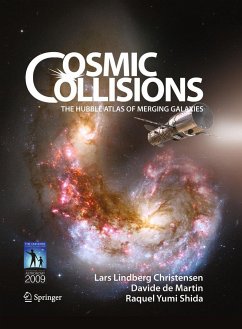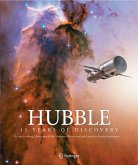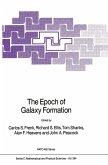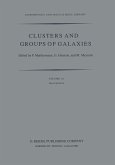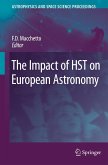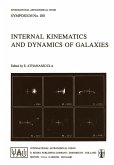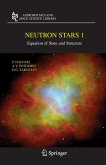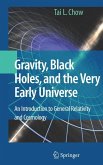Like no other telescope ever invented, the NASA/ESA Hubble Space Telescope has given us magnificent high resolution views of the gigantic cosmic collisions between galaxies. Hubble's images are snapshots in time and catch the colliding galaxies in different stages of collision. Thanks to a new and amazing set of 60 Hubble images, for the first time these different stages can be put together to form a still-frame movielike montage showing the incredible processes taking place as galaxies collide and merge.
The significance of these cosmic encounters reaches far beyond aesthetics. Galaxy mergers may, in fact, be some of the most important processes that shape our universe. Colliding galaxies very likely, hold some of the most important clues to our cosmic past and to our destiny. It now seems clear that the Milky Way is continuously undergoing merging events, some small scale, others on a gigantic scale. And the importance of this process in the lives of galaxies is much greater than what was previously thought.
Hinweis: Dieser Artikel kann nur an eine deutsche Lieferadresse ausgeliefert werden.
The significance of these cosmic encounters reaches far beyond aesthetics. Galaxy mergers may, in fact, be some of the most important processes that shape our universe. Colliding galaxies very likely, hold some of the most important clues to our cosmic past and to our destiny. It now seems clear that the Milky Way is continuously undergoing merging events, some small scale, others on a gigantic scale. And the importance of this process in the lives of galaxies is much greater than what was previously thought.
Hinweis: Dieser Artikel kann nur an eine deutsche Lieferadresse ausgeliefert werden.
From the reviews:
"The layout ... is very good with a clean easily read font printed on satin paper so it feels and looks a quality publication. As its name suggest it is a book about colliding galaxies ... . entertaining, user-friendly explanations of concepts without using jargon. The real pleasure is in the photographs ... of all types of galaxy taken with the Hubble Space Telescope are stunning. ... thoroughly recommend it. A fabulous book for the coffee table and a pleasure to browse ... ." (Darren Bushnall, Popular Astronomy, January-March, 2010)
"This large format book ... is a collection of galaxy pictures courtesy of the Hubble Space Telescope. Over eighty images, all full colour and many blown up to a full page, easily make this one of the more beautiful books of the year. The text follows the evolution of galaxies ... their properties and different types, and their eventual coalescence in mergers. ... Cosmic Collisions is a decent read and you will come back to it time and time again to look at the pictures." (Keith Cooper, Astronomy Now, February, 2010)
"This field is now highly active, attracting observers and theorists ... . This book is well positioned to profit from all this. ... The authors have chosen well in both scientific and visual terms. They give a clear account of current thinking about galaxy evolution, and have selected superb images to illustrate this. The production of the images on the page is exemplary. ... ensuring that your library has a copy can hardly fail to pay dividends in terms of student interest." (Andrew King, The Observatory, Vol. 130 (1214), June, 2010)
"The book is essentially a nice picture gallery of merging galaxies taken by the Hubble Space Telescope. Merging galaxies are the building blocks of galaxy evolution. The given comments and interpretations explain the essentials of galaxy astrophysics very competent." (Johannes Viktor Feitzinger, Zentralblatt MATH, Vol.1187, 2010)
"The layout ... is very good with a clean easily read font printed on satin paper so it feels and looks a quality publication. As its name suggest it is a book about colliding galaxies ... . entertaining, user-friendly explanations of concepts without using jargon. The real pleasure is in the photographs ... of all types of galaxy taken with the Hubble Space Telescope are stunning. ... thoroughly recommend it. A fabulous book for the coffee table and a pleasure to browse ... ." (Darren Bushnall, Popular Astronomy, January-March, 2010)
"This large format book ... is a collection of galaxy pictures courtesy of the Hubble Space Telescope. Over eighty images, all full colour and many blown up to a full page, easily make this one of the more beautiful books of the year. The text follows the evolution of galaxies ... their properties and different types, and their eventual coalescence in mergers. ... Cosmic Collisions is a decent read and you will come back to it time and time again to look at the pictures." (Keith Cooper, Astronomy Now, February, 2010)
"This field is now highly active, attracting observers and theorists ... . This book is well positioned to profit from all this. ... The authors have chosen well in both scientific and visual terms. They give a clear account of current thinking about galaxy evolution, and have selected superb images to illustrate this. The production of the images on the page is exemplary. ... ensuring that your library has a copy can hardly fail to pay dividends in terms of student interest." (Andrew King, The Observatory, Vol. 130 (1214), June, 2010)
"The book is essentially a nice picture gallery of merging galaxies taken by the Hubble Space Telescope. Merging galaxies are the building blocks of galaxy evolution. The given comments and interpretations explain the essentials of galaxy astrophysics very competent." (Johannes Viktor Feitzinger, Zentralblatt MATH, Vol.1187, 2010)

